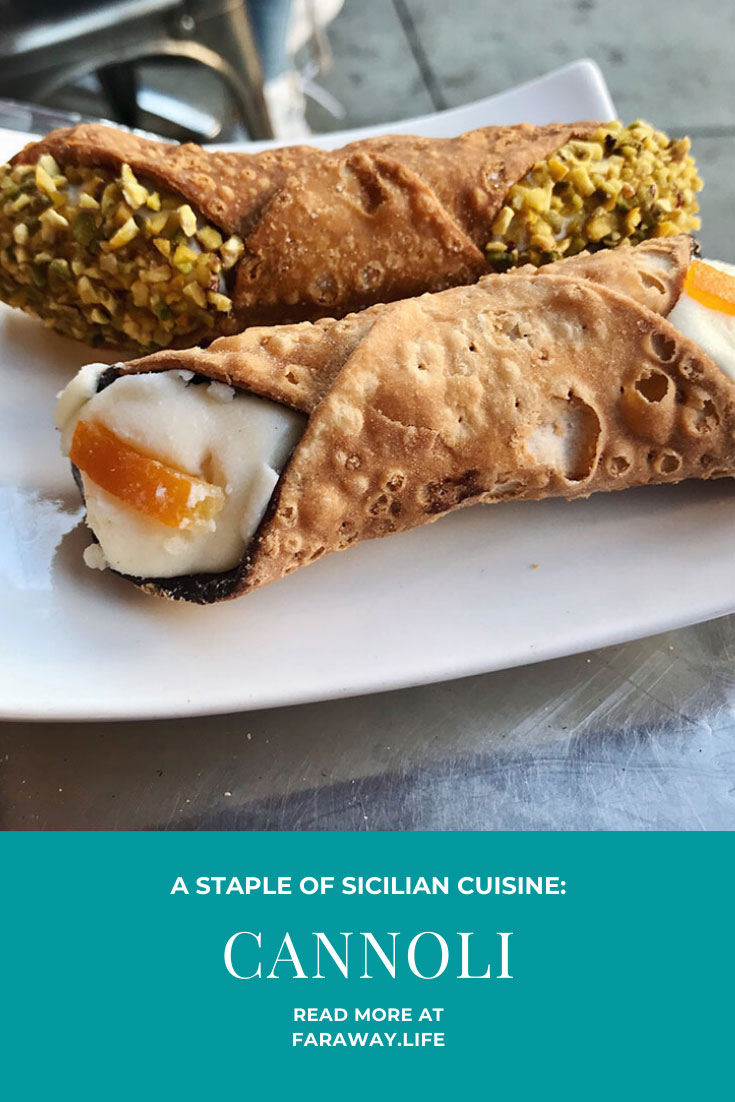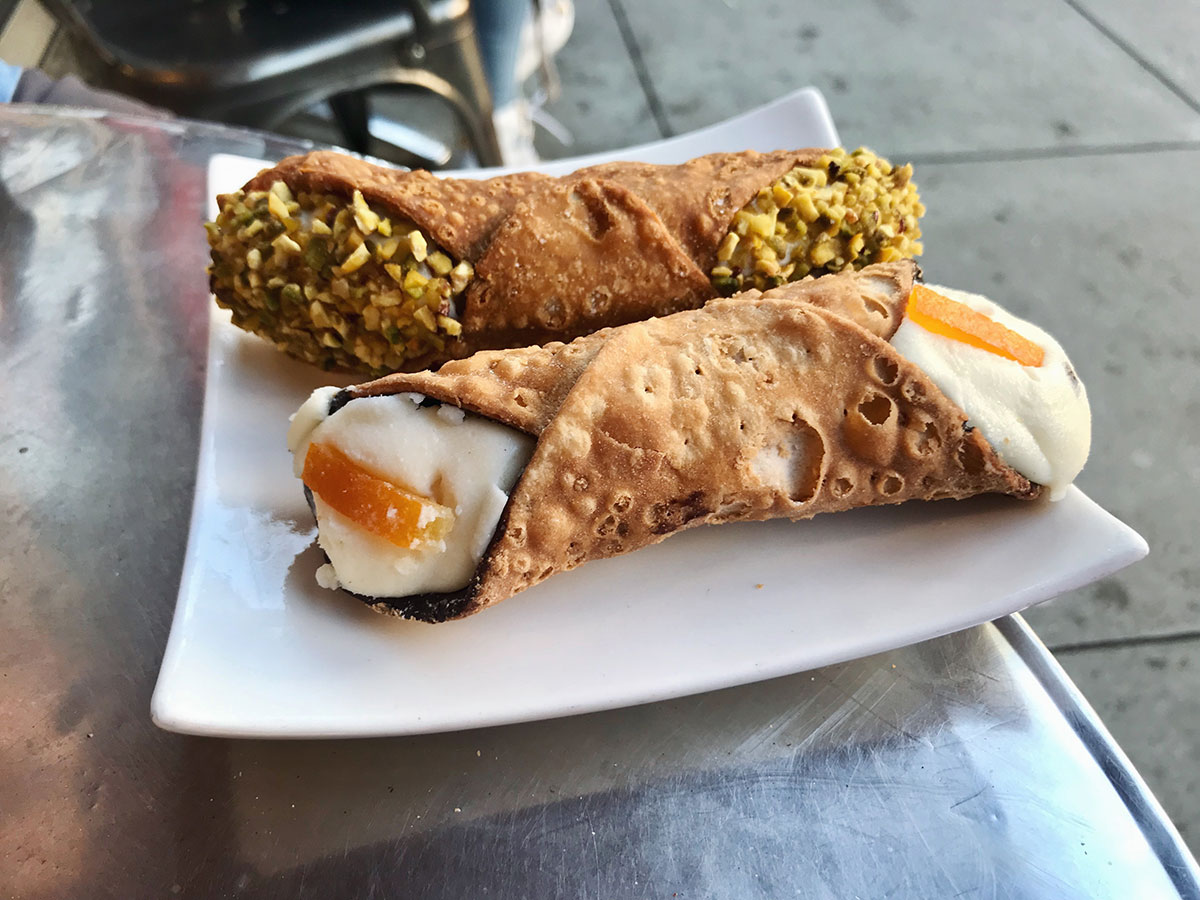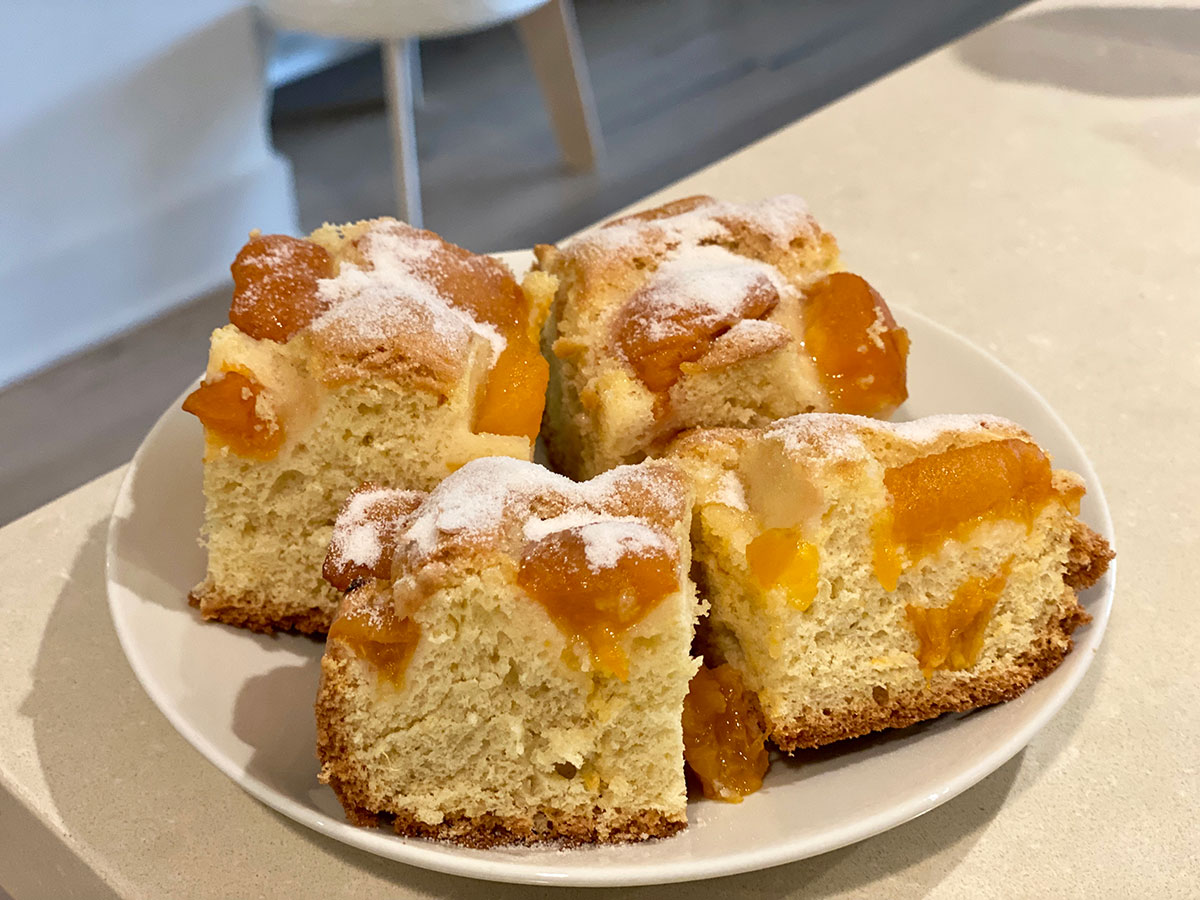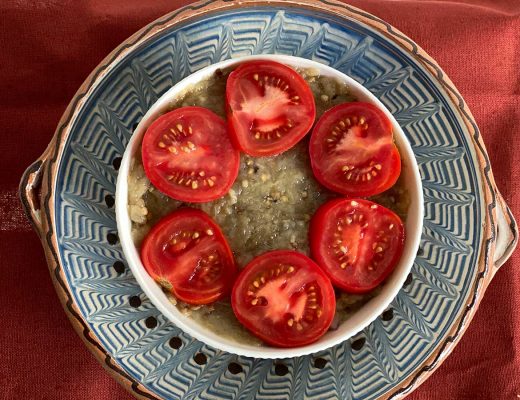Cannoli – the tube-shaped pastry dish, filled with sweet ricotta cream, is a staple of Sicilian cuisine, largely known all over the world.
“Cannoli” means “little tube” (is grammatically plural in Italian), referring to the pastry’s shape – a small tube, not bigger than a finger. In ancient times, Cannoli was referred to as “Cappelli dei Turchi” (Turkish Hats), and it was a symbol of fertility, made during the Carnivale.
READ MORE: Easy Spinach Frittata Recipe
HISTORY OF CANNOLI SICILIANI
Cannoli came from the Sicilian town Palermo, and its origins can be traced back during the Arabic occupation of the island, somewhere between 827 and 1091 AD. One of the main reasons supporting Cannoli’s Arabic roots is the ingredients used in making it. First of them – Ricotta: although this type of cheese had been used before, it’s only after the 9th century, when we can find sweet Ricotta. And this is because the Moors brought the sugar cane to Sicily. Previously, honey was used as a sweetener. And then, the other Cannoli’s ingredients: pistachio, nuts, almonds, and candied fruits, are also of Arabic origin.
Two tales are surrounding the invention of Cannoli: according to the first one, Cannoli was invented in an Arabic prince’s harem, by his concubines eager to create new desserts recipes, while the other legend says Cannoli was a nun’s creation, in a convent outside the city of Caltanissetta. What is interesting is the fact that both stories claim women were those who brought this iconic dessert to life.
READ MORE: SALZBURGER NOCKERL – THE FAMOUS AUSTRIAN SOUFFLÉ
TRADITIONAL CANNOLI SICILIANI INGREDIENTS
A traditional Cannoli Siciliani consists of a tube-shaped fried pastry dough, filled with sweet ricotta, candied fruits, pistachio, and sometimes chocolate chips or candied orange peel. The filling is very similar to the one used for Cassatta, another traditional Italian dessert.
The perfect Cannoli should be crunchy on the outside, but creamy and luscious on the inside. Traditionally, only ricotta from sheep milk is used, but nowadays, people are also using mascarpone or a mix of ricotta and mascarpone.
READ MORE: MOZART KUGEL – THE ONE AND ONLY SALZBURGER CHOCOLATE
HOW TO MAKE THE PERFECT CANNOLI SICILIANI
Here is a traditional Cannoli Siciliani recipe from VisitSicily:
Ingredients (for 4 – 6 cannoli)
For the shells:
- 150 g of ’00’ flour
- 50 g of caster sugar
- 25 g of lard
- 10 g cocoa powder
- 1 egg
- 1 tablespoon of marsala or white wine
- extra virgin olive oil
For the filling:
- 500 g of sheep’s milk ricotta
- 150 g of sugar
- vanilla extract
- dark chocolate
- candied orange peel
- chopped pistachios
Method (for the shells):
Place all ingredients in a bowl and mix, adding a little wine or vinegar, while bearing in mind that, when finished, the dough should have the same consistency as egg pasta. Cover the dough with a dish towel and allow to rest for about 30 minutes, then roll out with a rolling pin to create thin sheets (an egg pasta machine can also be used). Cut out oval shapes, if necessary using kitchen paper as a template. Wrap the shapes thus obtained around special tin tubes (reeds were once used for this purpose, hence the name), overlapping the edges of the dough by a few millimeters and brushing with lightly beaten egg white to hold in place and prevent the cannoli from opening during cooking. Fry them in hot lard or olive oil. Allow to dry and cool. Carefully remove the tin tubes. One version entails adding cocoa to the dough, but this only really serves to make the shells darker in color and has little effect on the flavor.
Method (for the filling):
Pass the ricotta cheese through a fine sieve (the use of electric whisks or mixers is not recommended as they will make the ricotta too thin), add the vanilla extract, chocolate flakes, and sugar. Once all the cannoli have been filled, decorate with the candied orange peel and ground pistachios, then dust with icing sugar.
Pin for later:







No Comments